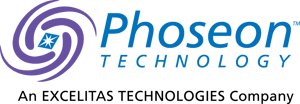UV inactivation is increasingly gaining traction among laboratories and manufacturers as a disinfection and decontamination solution. It is a clean and rapid method for either elimination of contaminants or preparation of viruses for vaccine […]
UV LED light has proven to be effective in laboratory settings for disinfection and decontamination purposes, making these processes cheaper, faster, and more reliable. UV LED has now revolutionized large laboratories and institutions, however the […]
UV LED radiation has proven to be an effective and innovative measure for disinfection and decontamination. Particular wavelengths affect different bonds within biological molecules. Therefore, determining what wavelengths are most effective against […]
Previous research has shown that KeyProTM (Phoseon Technology) rapidly and reliably decontaminates laboratory pipetman (1, 2). The unanswered question is, how necessary is this decontamination? Here we present a quantification of the contamination […]
RNase A Contamination: Unpredictable and Catastrophic
Working from previous knowledge that 275nm and 365nm sources work synergistically to speed RNase A inactivation, we used these wavelengths on Greiner Bio-One flat-bottomed black opaque microplates. Sample wells were first treated with 0.01u/mL of […]
RNase A Activity as a Predictive Tool for Log₁₀ Reduction of Bacterial and Fungal Spores on Surfaces
Certain clinically relevant organisms, such as Clostridium difficile (Clostridioides difficile) and Aspergillus brasilliensis, form spores that are resistant to UV inactivation. Indeed, Log₁₀ reduction in response to UV exposure is dependent not […]
Many experiments are carried out in Tris buffers because they are nearly bulletproof at maintaining a neutral pH regardless of what you (metabolically) throw at them. These buffers cannot be subjected to the same decontamination methods, as DEPC […]
The KeyPro™ KP100 system is the first in a family of products designed specifically to take advantage of Phoseon’s SLM™ LED Technology for Life Sciences applications. The KP100 is initially targeted at microplate, preparatory slide, and small […]









